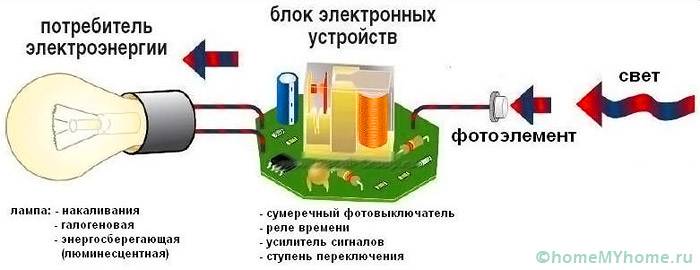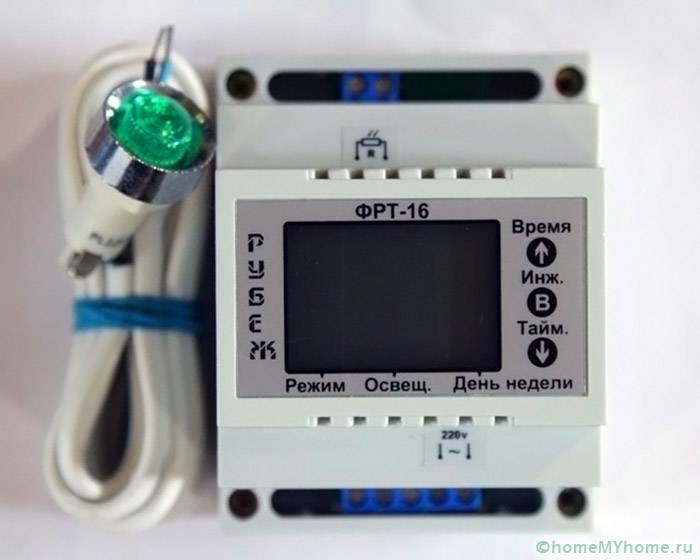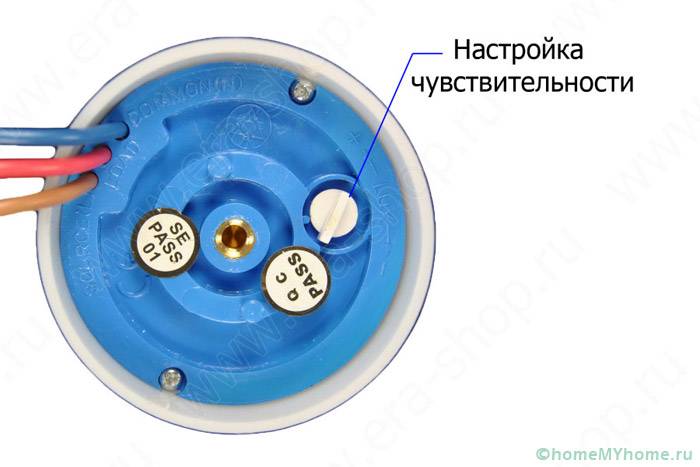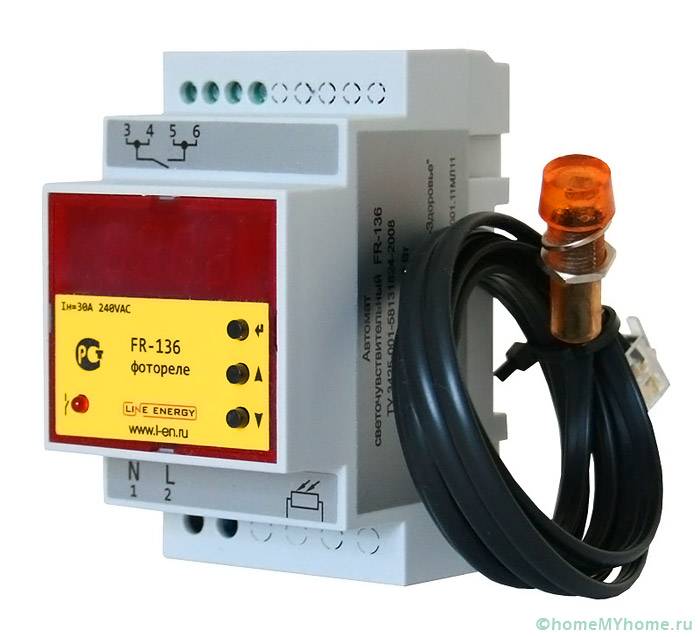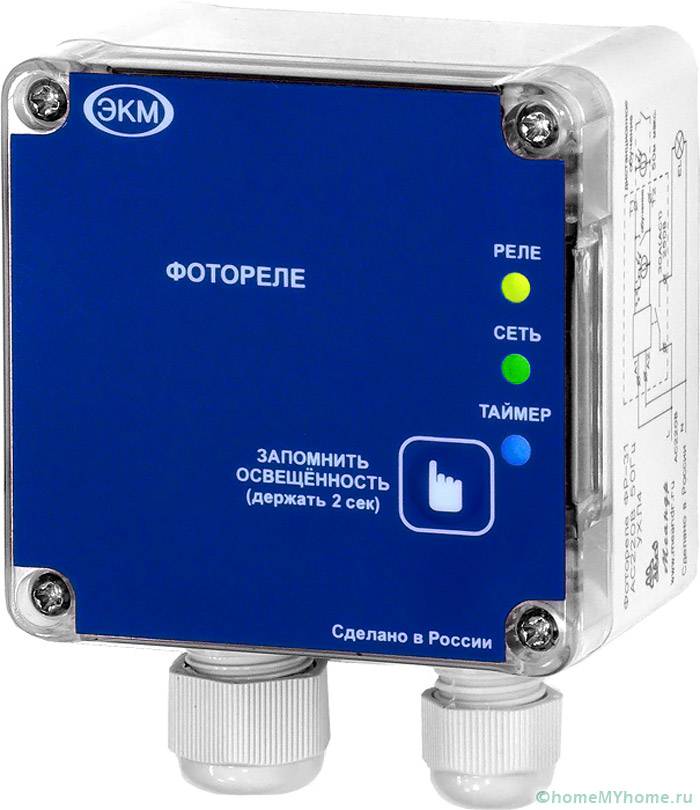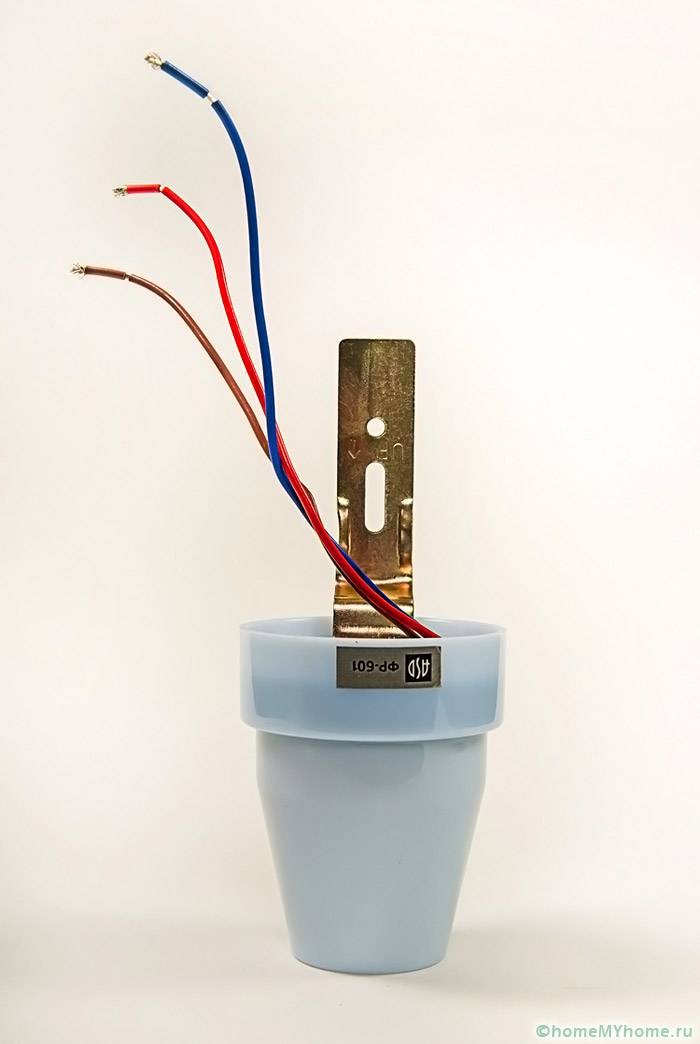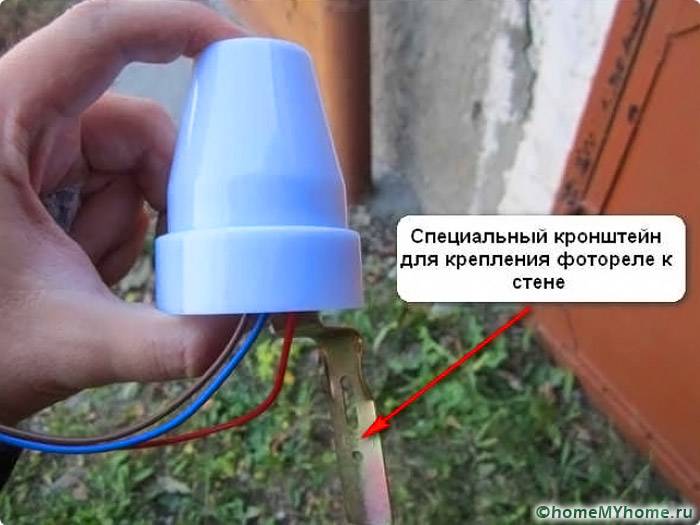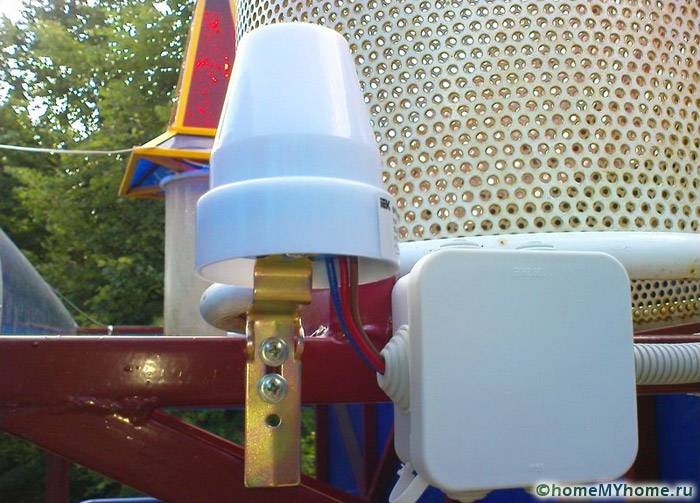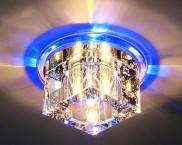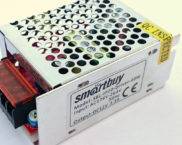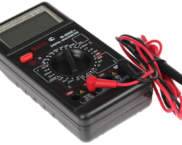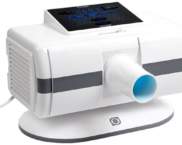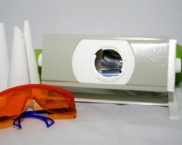How to connect a photo relay for street lighting
The most optimal solution for light control is a photo relay for street lighting. This mechanism not only helps to effectively control lighting fixtures, but also helps to easily turn on hard-to-reach devices. In addition, the photo relay allows you to save electricity and turn on the lamps only as needed.
The content of the article
Basic principles of photo relay for street lighting
The principle of operation of different photo relays for street lighting is very similar. The most important element of the device is the photosensitive element, which changes its properties under the influence of the light flux. The photocell is connected to the control board, which controls all the parameters of the device. Also in the design there is a relay and a comparator.
A relay or triac is a special output device that distributes the load. The comparator is the threshold for starting the structure.
When the lighting level changes, [the characteristics of the photocell change and voltage is applied to the relay. In this case, the wires of the electrical circuit are closed and opened. Some samples are included when there is any movement opposite the installation site.
It is worth highlighting the following advantages of the device:
- the level of safety increases, since the automation regulates the switching on of the lamps in the dark;
- energy saving;
- the device has a long service life, low weight and quiet operation;
- the comfort of living conditions increases;
- automatic inclusion is used as a repeller.
Related article:
Motion sensor for lighting a private house. A separate material provides guidance on connecting a motion sensor and choosing it wisely.
Technical specifications
Before buying a photo relay for street lighting, you need to familiarize yourself with the main characteristics of this device:
- voltage indicator should be 220V;
- the maximum current value is important with a large number of luminaires used;
- the trigger threshold is displayed in lumens;
- turn-off and turn-on delay is measured in seconds;
- the power parameters are indicated by the value for the operating mode and the standby mode;
- degree of protection, the mechanism is mounted outdoors or in a closed building.
The required illumination level is set using regulator the bottom of the appliance. When moving to the plus side, the lamp will turn on even with a slight darkening. If the lever is moved in the minus direction, the mechanism will work only after sunset.
Helpful information! It is important to pay attention to the dimensions, installation method and operating temperatures.
The main types of devices
Photo relays are in demand for street lighting of the following types:
- with photocell in the housing. Suitable for full automation of outdoor lighting systems;
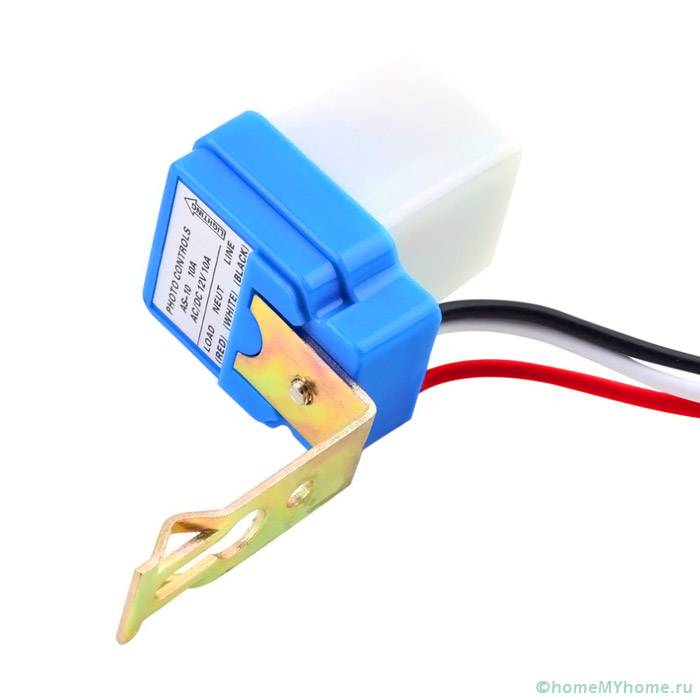 The photo sensor is inside the device[/ caption]
The photo sensor is inside the device[/ caption]- with a special timer and photosensor. The device helps to turn off the lighting at the end of the allocated time period;
 Annual timer with functions of voltage relay and photo relay REV-302[/ caption]
Annual timer with functions of voltage relay and photo relay REV-302[/ caption]- with a separate photocell are reliable.
Choosing the right device depends on your budget and communication capabilities. In addition to conventional photo relays, combined options can be used: temporary sensors and motion sensors. If there is a time timer, the mechanism is triggered not only by the lighting level, but also by the time of day.
Devices with a sensor, built-in timer and motion sensor are rare. They are equipped with a special screen and are programmable to set a specific lighting program.
The nuances of the connection diagram
It is worth highlighting the following schemes for connecting a photo relay for street lighting, which are placed in accordance with the modules being mounted. The models differ in the presence of several conclusions.
Three-pin connection features
If there are three terminals in the unit, then the power supply is performed as follows: the brown wire is connected to the phase terminal in the housing of the installation box, blue to the zero element, and red to the terminal to which the phase goes to the lighting device.
Two-pin connection
The phase input is connected to the element on the device body, and the neutral wire is also connected. The lighting devices are connected in the same way. If the output is a pair of terminals, then several lighting devices can be controlled. In this case, the wires are mounted to the controller in a parallel direction.
There are photo relay models that can be used in lines with ground... They are characterized by auxiliary terminals where the earth wires are connected.
Helpful information! To make the correct connection, you need to navigate the connection diagram, which is indicated in the technical passport.
Installation work
The connection can be done by hand according to the photo relay scheme for street lighting. Sealed models are mounted using an outrigger bracket.
Installation is done with screws using holes in the housing. The remote-type sensor is mounted outdoors. When choosing a place, you should adhere to certain rules. Installation is carried out in a sunny location. There should be no shadow from fences, awnings or high walls.
Helpful information! Do not install near flammable or flammable materials, or near unstable environments. Do not mount the device with the base up.
Benefits of using a photo relay for street lighting: prices
The installation of a photo relay is beneficial in various cases. There is no need for independent monitoring of systems. As the operating time of the lamps decreases, electricity is saved. Security functions appear. The installation of the device is practically no different from the installation of other electrical appliances.
In addition, the lighting system performs the security function, since it can turn on the light in the absence of the owners. You can install such equipment yourself, without the help of an electrician.
The table shows prices for some models.
Table 1. Photo relay models and average price
| Picture | Models | Suppliers | Cost, rub. |
|---|---|---|---|
 | FR-16A | NTK Electronics | 1290 |
 | FR 601 | IEK | 230 |
 | FRL-11 | TDM Electric | 520 |
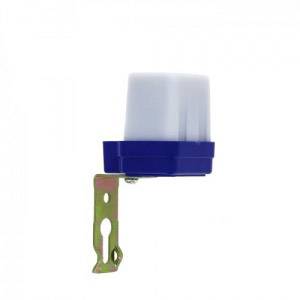 | FR-PS-1-6 | EKF | 200 |
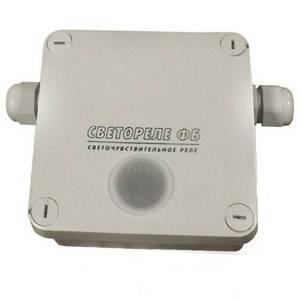 | FB-2 | NTK Electronics | 1100 |
Useful Tips
The adjustment of the photo relay for street lighting, as well as the features of the choice of mechanisms, is important. When buying a dimmer, the following guidelines will help:
- it is worth calculating the real parameters of the territory adjacent to the house;
- for arrangement in a suburban area, you can use a relay with the function of adjusting the sensor threshold. These devices are very easy to configure;
- devices with built-in photocells will allow installation on their own;
- for arranging structures with remote elements, certain skills will be required;
- equipment with a timer enabled has a higher cost, but will ensure uninterrupted operation.
A device with a timer will save on electricity consumption, since the device can be adjusted to fit your needs and the lighting time can be programmed.
Different manufacturers offer a huge range of design solutions that will allow you to choose the right mechanism for certain conditions.
Video: photo relay turning on and off lighting






